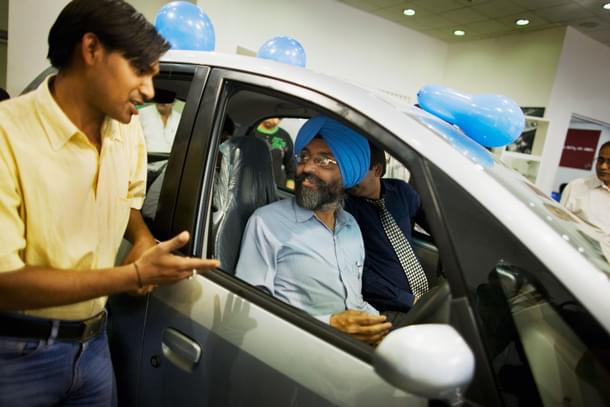Business
Indian Car Industry Can’t Depend On Steroids For Growth; It Has To Rethink Business Model
R Jagannathan
May 03, 2019, 12:40 PM | Updated 12:40 PM IST
Save & read from anywhere!
Bookmark stories for easy access on any device or the Swarajya app.


That the automobile industry is facing a huge demand challenge is obvious. In April, data available so far suggest that passenger vehicle sales dropped 16 per cent, the sharpest fall in six years. Two-wheeler sales too dropped by a similar percentage, which is saying something, for that means a fall of over three lakh vehicles from the corresponding month last year.
Worse, the passenger vehicles industry — which means cars and SUVs — is facing huge overcapacity, with underutilisation of installed capacities ranging from a moderate 19 per cent for market leader Maruti Suzuki to an average of over 60 per cent for the rest of the foreign carmakers, with Renault-Nissan's underutilisation at a massive 62.5 per cent, according to a Times of India report today (3 May).
Two things need stating upfront: this is no ordinary cyclical slowdown; and two, a revival cannot happen unless the industry rethinks its basics. (Read here, here for some answers on what’s changing in the industry).
Let us first understand why the industry grew so fast in the first place over the past decade or two.
First, we had a spectacular failure of public policy, where even as urbanisation accelerated, public transport was ignored. This naturally led to dependence on private vehicles.
Second, the industry, thanks to its linkages to downstream employment and “sexy” status among policy-makers, got favoured treatment in terms of taxation. In the post-Lehman crisis period, the industry was offered huge duty cuts that lasted all the way until 2014-end.
Today, the industry faces real growth challenges as policy-makers are making amends for past failure in promoting public transport. Most major cities are now investing heavily in metros and buses, as traffic congestion and pollution forces city authorities to deter private vehicles.
But public transport policies are still wayward, and would not have threatened the passenger vehicle industry too much in the short run if technology had not presented another challenge.
Thanks to the frenetic growth of app-based taxi-hailing platforms like Ola and Uber, there has been a steady shift away from private ownership of cars to shared mobility services. This shift will continue in the foreseeable future, despite the best efforts of city politicians to impede the growth of shared mobility in order to protect existing taxicab and three-wheeler incomes.
Put another way, demand for cars is going down because productivity is going up. The average privately owned car may not do more than two trips (back and forth) daily, but the average Ola driver will ferry 10-20 passengers a day, depending on demand on specific days. When the average productivity of a car rises so sharply, it will obviously impact overall demand, especially for people who were earlier likely to opt for multiple cars per household.
On the pollution front, the managed deregulation of fuel prices has shifted demand away from diesel vehicles to petrol as the price gap between the two fuels has narrowed. The new emission norms under Bharat Stage VI, which kick in from April next year, will make diesel engines costlier to produce in the smaller vehicle ranges. Maruti plans to stop all diesel vehicle production by that time.
On the other hand, policy may also push vehicle makers towards the production of more non-polluting vehicles, especially electric vehicles (EVs) and hybrids, which means that more pain is underway for the industry. It has to seriously reorient its production capacities even as sales revenues plateau.
Future growth for the industry will thus depend on two key factors. One is through true innovation that improves technology and brings in the wow factor for customers. The other is technology adaptation towards lower polluting cars and two-wheelers. A related shift will be to reorient the marketing chain towards fleet sales rather than targeting just families and individuals.
The slowdown in passenger vehicle sales should have been foreseen even earlier. Now that it is already upon us, the industry has no reason to procrastinate on change. One cannot rule out consolidation, as India has simply too many car-makers vying for a plateauing customer base. Two years ago, General Motors shut shop in India. More may need to exit to let the rest of the industry remain viable.
Jagannathan is former Editorial Director, Swarajya. He tweets at @TheJaggi.





